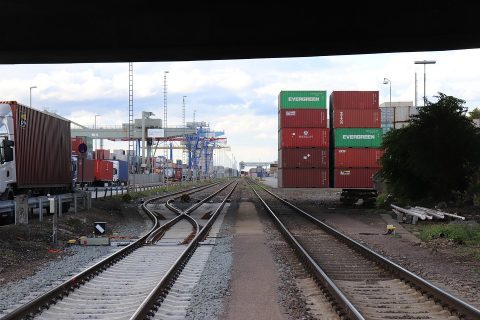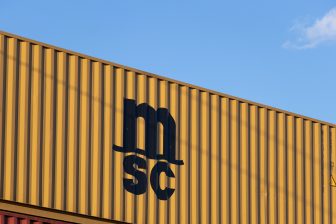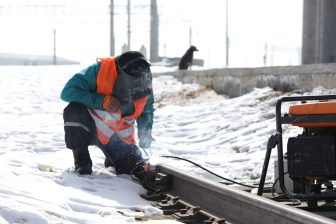
The much debated truck vs train question resolved
Which is faster? The train or truck to China? The answer will depend on the perspective and hence, different parties have varying statements on the debated train versus truck question to China. The truth is, the travel speed is more or less the same. The advantage of the truck is in the last-mile delivery, point out Viacheslav Vikentyev of the IRU Permanent Delegation to Eurasia.
IRU is a global road transport organisation passionately involved in the redevelopment of the New Silk Road. “When the first trains arrived from China in Duisburg, it was revolutionary. Now there are thousands of trains along this route. The next step is to diversify the way goods are shipped between these continents”, says Vikentyev. On 27 November, he will be speaking about this topic at the European Silk Road Summit. This is a preview of his presentation.
Truck vs train
In November 2018, Alblas Int. Transport organised a road journey from Khorgos (on the border with Kazakhstan) to the Polish city of Słubice in 13 days. According to Vikentyev, a journey from the same place to Spain could be carried out in 17-18 days. In comparison, a journey from Xi’an in the east of China to Mannheim is Germany is made in 15 days.
“In terms of speed, truck and train are more or less the same. They are both definitely faster than sea transport. But the advantage of the truck is that it provides door-to-door services so there is no need for transshipment. It is here where the time-saving is done. And this can be very interesting for certain types of products”, says the IRU representative.
TIR advantage
This year, the Chinese government opened all its checkpoints to international road transport under TIR. This was on 25 June. TIR (Transport International Routiers) is a globally applicable international customs transit and guarantee system, which enables goods to be shipped from a country of departure, through transit countries, to a country of destination in sealed load compartments.
With the TIR, cargo does not have to be checked or taken out during the journey. This means that a truck transport can be carried out by a single driver, from start till finish. It can save significant amounts of time and money by not spending as long waiting at borders. These TIR benefits are now available for routes to and from China, Vikentyev explained.
Surprised
“For the first time, there were foreign drivers in China. This is all very new.” In March, a first pilot was carried out featuring foreign trucks entering deep into the territory of China. Since the beginning of summer 250 trips were carried out to countries such as Russia, Poland, Germany, Kazakhstan and Turkey. But the operations have not been completely smooth, there are still obstacles on the road.
“Because TIR is new in this part of the world, not everybody is well informed. Some people do not know about the new possibilities they have in front of them. Truck drivers are sometimes stopped by authorities in China. It then takes them one or two days to clarify if the shipment is permitted. Such barriers must be removed if this is to be successful. In order to do this we need to raise awareness.”
Environment
It is a challenging time for the road transport sector to say it is going to put more trucks on the road. Because of the environmental impact of road transport, the sector is under pressure and the rail freight industry is calling for a shift to rail. But there will always be a demand for truck transport, says Vikentyev. “People are always willing to pay for door-to-door deliveries, especially when it comes to products that require fast and safe deliveries.”
“However, trucks will not completely take over from rail freight in the corridor between Europe and China, the IRU representative says. “These modalities will complement each other. Trade between China and the EU has now passed the 500 billion USD mark, and is expected to reach 800 billion USD by 2020, with a share of freight traffic close to 170 million tonnes. Due to congestions in sea routes and in ports, Eurasian overland transport corridors could attain up to 8-10 per cent of China-EU freight traffic.”
European Silk Road Summit
Do you want to hear more from Viacheslav Vikentyev on this topic? The European Silk Road Summit takes place on 26 and 27 November in Venlo, the Netherlands. Registration for this event is now open. The programme can be found here.






It would have thought train over truck. How many containers can a truck pull to a train. Environmentally the train will win, hands down surely?